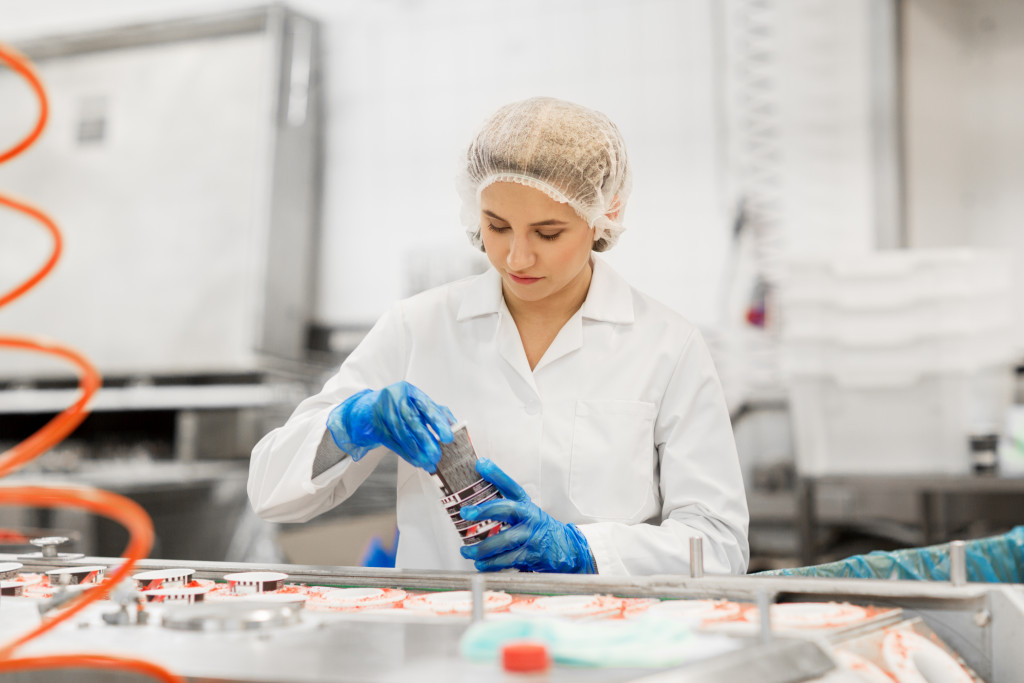• Understand regulatory requirements such as obtaining a food establishment permit and complying with health and safety regulations.
• Select an accessible location for the facility with adequate utilities and proximity to raw material sources.
• Design facility layout and equipment selection to optimize efficiency, reduce contamination risks, abide by food quality standards, and comply with GMPs.
• Choose equipment with sanitary design, high-quality materials, and energy efficiency to ensure efficient production.
Embarking on the journey of establishing a food processing facility can be both exciting and challenging at the same time. It is a lucrative sector with plenty of potentials but demands thorough planning and a clear understanding of the key steps involved. According to a study, the food processing industry is expected to reach an estimated $6.4 trillion by 2025, with a CAGR of 3% to 5% from 2020 to 2025, making it a great opportunity for entrepreneurs. This guide is designed to help you navigate the complexities of creating a successful food processing facility.
Understanding Regulatory Requirements:
Before diving into facility design and equipment selection, it’s essential to familiarize yourself with the legal and regulatory requirements surrounding food processing. Depending on the location of your facility, you may need to obtain the following:
Food Establishment Permit
Depending on the country, state, and local laws, you may need to obtain a permit before starting production. This could include obtaining an Environmental Health Permit or a Food Manufacturer Licence in some locations. These are necessary to ensure your facility complies with the local health department regulations.
Health & Safety Regulations
You must ensure that your facility complies with all health and safety regulations. This includes ensuring the facility is hygienic, has sufficient ventilation, and follows all sanitation protocols. Authorities will have to inspect your facility to ensure that it meets the standards set out by the local health department.
Food Quality Standards
In addition to regulatory requirements, you must ensure that your food processing facility meets the quality standards set by governing bodies. This includes ensuring that all food items are produced in compliance with Good Manufacturing Practices (GMPs). GMPs are designed to ensure the safety and quality of food production. Bulk ingredient suppliers must be certified before being used in your facility.

Facility Design and Site Selection
The layout and design of your food processing facility are crucial to its functionality, efficiency, and compliance with food safety regulations. Consider the following factors when selecting a site and designing your facility:
Location
Choose an accessible location with good infrastructure, adequate utilities, and proximity to raw material sources and distribution channels. The general rule when picking a location is to minimize transportation costs as much as possible.
Facility Design
Your facility’s design should consider the type of production you plan on doing. Consider layout, workflow, materials handling, cleaning procedures, and food safety guidelines. The layout should be designed to optimize efficiency and reduce contamination risks. For instance, finished goods should be stored away from raw materials to prevent cross-contamination.
Pipings
Pipings for industrial use must be made with stainless steel or other materials approved by governing bodies. These are essential for transporting and storing liquids during the production process. Choosing piping that can withstand high temperatures and pressures and provide optimal flow rates for your process is important. Piping should be inspected regularly to ensure it is up to standard and safe for use.
Equipment Selection
Once you have a clear understanding of your production needs, it’s time to select the right equipment for your facility. Consider factors such as ease of use and maintenance costs when selecting equipment. You will also need to factor in the following:
Sanitary Design
When selecting processing and packaging equipment, ensure the components are designed with smooth surfaces and rounded edges for easy cleaning. This is essential for preventing bacteria growth in hard-to-reach areas. It’s also important to select equipment that can be dismantled easily for proper sanitation of parts.
High-Quality Equipment

High-quality equipment is essential for efficient production and compliance with food safety standards. Selecting equipment that meets FDA, USDA, or other relevant regulatory standards is important. Make sure to inspect for any defects before purchasing equipment.
Energy Efficiency
Equipment with high energy efficiency ratings can help reduce costs and improve the overall efficiency of your production process. Look for equipment with variable speeds to adjust power usage according to needs. Machines such as fillers and cappers should also be equipped with sensors to avoid overfilling or overlapping products.
The food processing industry is constantly evolving, and staying informed about the latest trends is important to remain competitive. With the right planning and resources, you can set up a successful food processing facility that meets all regulatory requirements. By following this guide, you can gain insight into the key steps in setting up a food processing facility and learn how to navigate the industry’s complexities.
